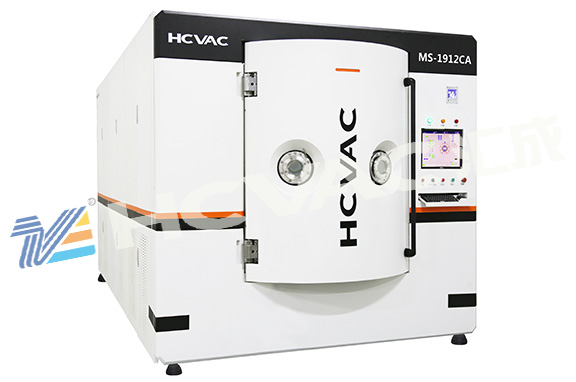In order to successfully automate the process of the pvd coating machine, the most important thing is to ensure that the valve itself can meet the special requirements of the process and the medium in the pipeline. Usually the production process and process medium can determine the type of valve, the type of valve plug, and the structure and material of the valve trim and valve.

After the valve of the pvd coating machine is selected, the next step is to consider the requirements of automation, that is, the selection of the actuator. Actuators can be considered simply in terms of two basic types of valve operation.
1. Rotary valve (single-turn valve)
Such valves include: plug valves, ball valves, butterfly valves, and dampers or flaps. Actuators that require the required torque for a 90-degree rotation of this type of valve
2. Multi-turn valve
Such valves can be non-rotating poppet stems or rotating non-rising stems, or they require multiple turns to actuate the valve to the open or closed position. Such valves include: straight-through valve (stop valve), gate valve, knife gate valve, etc. As an option, pneumatic or hydraulic cylinders or membrane actuators with linear output are also open to drive the above valves.
At present, there are four types of actuators, which can use different driving energy and can operate the valves of various types of
pvd coating machines.
1. Electric multi-turn actuator
Electric-driven multi-turn actuators are one of the most common and reliable types of actuators. A single-phase or three-phase motor drives a gear or worm gear and finally drives the stem nut, which causes the valve stem to move to open or close the valve.
2. Electric single-turn actuator
This kind of actuator is similar to the electric multi-turn actuator, the main difference is that the final output of the actuator is 1/4 revolution and 90 degree movement. The new generation of electric single-turn actuators combines most of the complex functions of multi-turn actuators, such as parameter setting and diagnostic functions using a non-intrusive user-friendly operator interface.
3. Fluid-driven multi-turn or linear output actuators
This type of actuator is often used to operate globe valves (globe valves) and gate valves, which are operated either pneumatically or hydraulically. The structure is simple, the work is reliable, and it is easy to realize the fail-safe operation mode.
4. Fluid-driven single-turn actuator
Pneumatic and hydraulic single-turn actuators are very versatile, they do not require power and are simple in structure and reliable in performance. The fields of their application are very wide. Usually the output is from a few kilograms of rice to tens of thousands of kilograms of rice. They use cylinders and transmissions to convert linear motion into right-angle outputs. Transmissions usually include: forks, racks and pinions, and levers.



